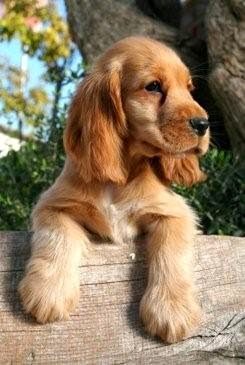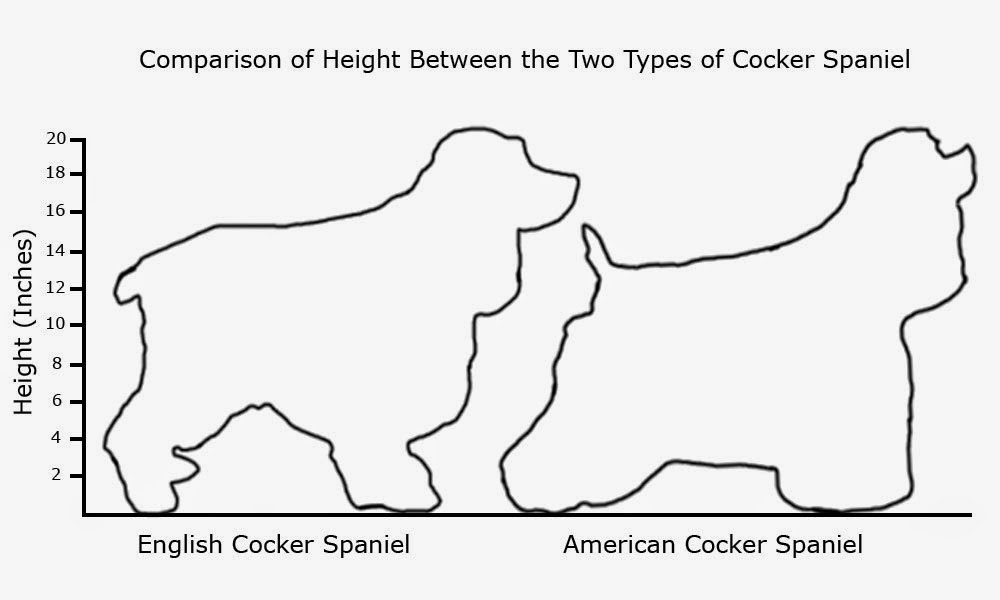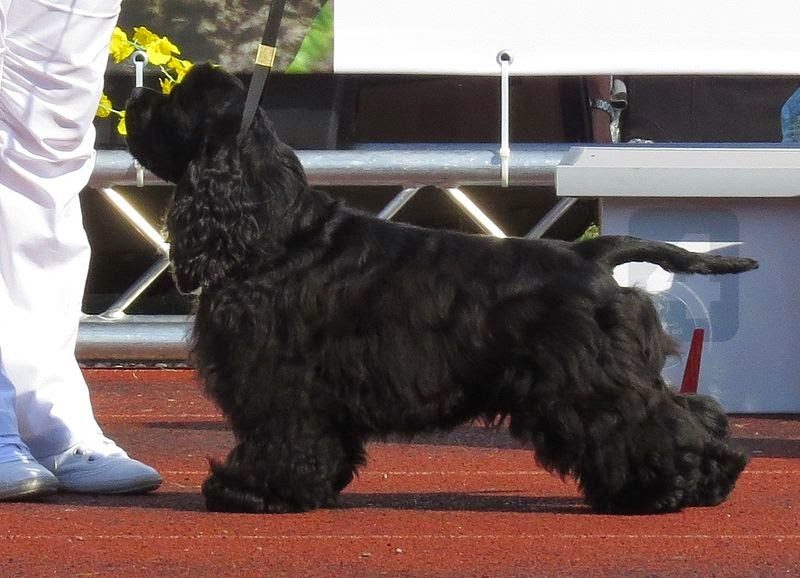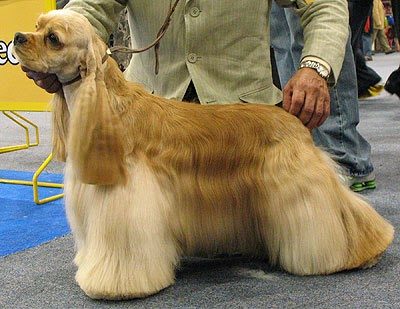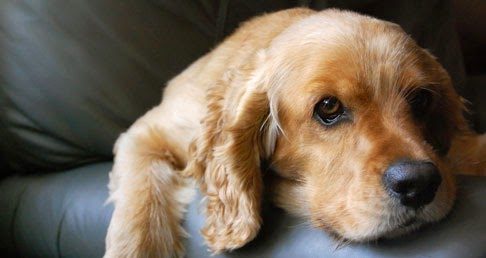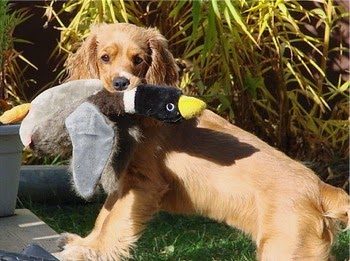Everything about your Cocker Spaniel
Famously known as Lady from Lady and the Tramp, this breed has a sweet temperament and a deep love for the human kind. Named after its preferred hunting game, the woodcock, the original Cocker Spaniel derived from England and was imported to the U.S. Now there are both the American Cocker Spaniel and the English Cocker Spaniel. Regardless of your choice, this dog is the most-popular Spaniel breed. No longer used for hunting in America (but still used for hunting in England), this breed makes an awesome family pet, wherever it resides.
The Cocker Spaniel is primarily a beloved companion dog breed, though he remains a capable bird dog at heart. Beautiful to look at , the Cocker’s amenable, cheerful disposition also makes him a treat to have in the family. Never more pleased than when he’s pleasing you, he’s as happy to snuggle on the couch with his favorite adults as to romp in the yard with the kids.
Overview
The smallest member of the American Kennel Club Sporting Group, the Cocker Spaniel is the darling of many U.S. pet owners. Remember the female lead in Lady and the Tramp? It’s no accident that the movie’s model of an affectionate and pampered pet was a Cocker Spaniel. From the late 1930s to the 1950s, the Cocker was the number-one breed registered with the AKC. Then his popularity declined for almost 30 years, but he shot to the top of the charts again during the mid-1980s, and only in 1992 was his number-one status taken over by Labrador and Golden Retrievers. Today, the Cocker remains within the top 15 registered breeds.
And no wonder — a well-bred Cocker Spaniel is a pleasure to own. He is known for a merry, sound temperament. His flowing coat is extremely handsome, he’s loving and gentle, and he wants nothing more than to make his family happy.
Compared to other dogs in the Sporting Group, the Cocker is small (20 to 30 pounds), fitting comfortably into an apartment, condo, or a small home. He is primarily a companion but is easily trained for the conformation show ring, obedience and agility competitions, and field work. He is also an excellent therapy dog.
The Cocker Spaniel resembles the English Cocker Spaniel, one of his peers in Sporting Group, and formerly the two breeds were considered one. However, a number of Spaniel fanciers noticed the different strains of Cocker and sought to preserve separate breeds and discourage the interbreeding of the English and American varieties. The American Kennel Club recognized the two breeds as separate in 1946.
The typical Cocker Spaniel is gentle, a loving and trustworthy family companion who is good with children, other pets, and the elderly. Unfortunately, his extreme popularity leaves him open to the bane of all favorite breeds: unscrupulous people who breed with no regard for temperament, health, or conformation.
As a result, some Cocker Spaniels have serious health and temperament problems. If you are considering a Cocker Spaniel, you must be extremely careful from whom you buy or adopt a puppy. Buy only from a reputable breeder. Never buy a puppy from a backyard breeder, puppy mill, or pet store. Reputable breeders breed with temperament in mind and perform various health tests to ensure that their breeding dogs don’t pass on a predisposition to genetic diseases.
Other Quick Facts
- Loving, affectionate and gentle, a well-bred Cocker is a terrific family pet and fits comfortably into any size home.
- A poorly bred Cocker is snappy and afraid of people. This breed is one in which it pays to work with a responsible, experienced breeder.
- The Cocker can compete in field trials, hunt tests, obedience, rally, agility, freestyle, and other forms of dog performance activities. He makes a good therapy dog.
- The Cocker tail is typically docked, or cut short, when puppies are three or four days old. This is a point of controversy to some because it is a cosmetic procedure, although people in the breed note that it helps protect the tail from injury in the field.
- Even well-bred Cockers are sensitive, so it’s important to use positive reinforcement and praise during training.
- Because Cockers are so popular, it is especially careful to research breeders and find one who is dedicated to improving the breed.
- The sensitive Cocker Spaniel can be a bit nervous, even when he’s from a good breeder and has been properly socialized. Don’t be surprised if your Cocker exhibits submissive urination .
- Cockers can be barkers, so response to a “Quiet” command should always be part of this dog’s repertoire.
- The Cocker is eager to please and likes to be close to his family. But remember, he was bred to be a hunting dog. Don’t be surprised when he chases birds or other small animals when you’re out on a walk. Keep your Cocker on a leash whenever you aren’t in a fenced area.
- The Cocker has a “soft” personality. Harsh training methods will make him fearful, so be sure to use gentle, consistent training to get the best results.
- A Cocker Spaniel’s long ears are both a part of his beauty and a potential health problem. Be sure to check your Cocker’s ears every week for infections.
- Keeping the Cocker coat beautiful is expensive and a lot of work. Plan on paying a professional groomer and on brushing the coat every day.
- To get a healthy pet, never buy a puppy from a backyard breeder, puppy mill, or pet store. Find a reputable breeder who tests her breeding dogs for genetic health conditions and good temperaments.
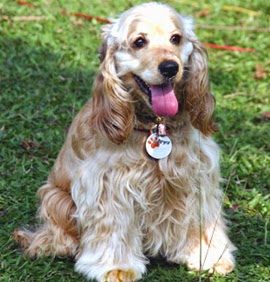 Breed standards
Breed standardsAKC group: Sporting Group
UKC group: Gun Dog Group
Average lifespan: 11 – 13 years
Average size: 14 – 30 pounds
Coat appearance: Silky, straight or slightly wavy
Coloration: Black, tan, black and tan, sable and various other colors
Hypoallergenic: No
Other identifiers: Medium size, dark eyes, low-set feathered ears, docked tail
Possible alterations: Coat may be another solid coloration other than black.
Comparable Breeds: Brittany, Cavalier King Charles Spaniel
There are two modern breeds of cocker spaniel, the English Cocker Spaniel and the American Cocker Spaniel. They were bred as gun dogs; to use their sense of smell to cover low areas near the handler in order to flush birds into the air to be shot, and to use their eyes and nose to locate the bird once downed, and then to retrieve the bird with a soft mouth.The major differences between the English and American varieties is that the American is smaller with a shorter back, a domed head and a shorter muzzle, while the English variety is taller with a narrower head and chest.
